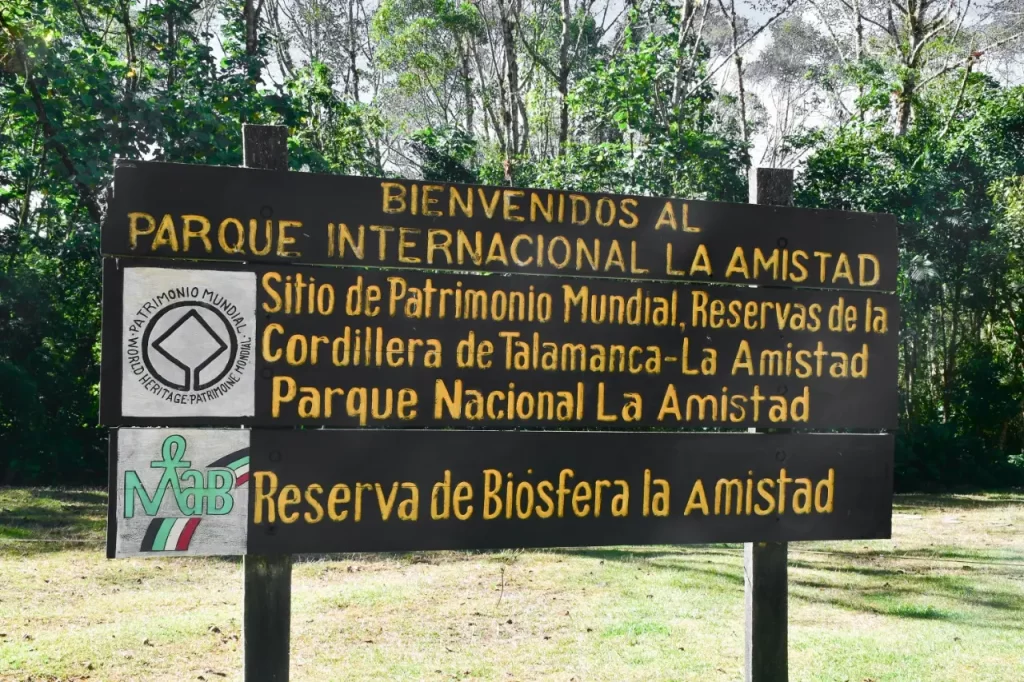The International Friendship Park
By Dave Skinner
In 1979 the presidents of Costa Rica and Panama jointly declared their intention to establish an international park to protect the natural ecosystems in the Talamanca Mountains which straddle the border between the two countries. Ten years later the “Parque Internacional La Amistad” was formally created and soon achieved UNESCO World Heritage recognition as a Biosphere Reserve for its value in preservation of the natural environment. The Nature Conservancy has also targeted this area and is working with local groups and government agencies to strengthen cross-boundary conservation efforts in the region.
This enormously important protected area covers over 570,000 hectares, about half of which is in Costa Rica and the other half in Panama. The area includes a wide range of ecosystems from tropical low forests to tropical alpine grasslands in the mountains that tower to over 3,000 meters (10,000 feet) in altitude. It is estimated there are over 10,000 species of plants, 215 species of mammals, 600 species of birds, 250 species of reptiles and amphibians, and 115 species of fresh water fish. Many of these species are endemic to these mountains and found nowhere else in the world. The park also serves as an important biological corridor for wildlife migrations.

Four tribes of indigenous people live within and around its territory and benefit from the cooperation of the countries of Costa Rica and Panama as well as from the eco-tourism industry that has been developed there. In the Caribbean sector of the park, there are 17 community groups from the Talamanca Indigenous Reserve which have formed the Indigenous Tourism Network. On the Pacific side four local communities organized themselves under the Quercus Network. Ecotourism is beginning to be an important alternative for the indigenous groups, allowing them to use the region’s natural resources without exploiting them or destroying the forests.
I have had the pleasure of staying with a Naso family in their village along the Rio Bonyic in Panama, with the Bribri on the Caribbean side of Costa Rica, and at the Durika Biological Reserve on the Pacific side in the region of the Cabécar Indians. I have found the people of the region to be just as friendly and welcoming as you might expect from a place called La Amistad (Friendship).

